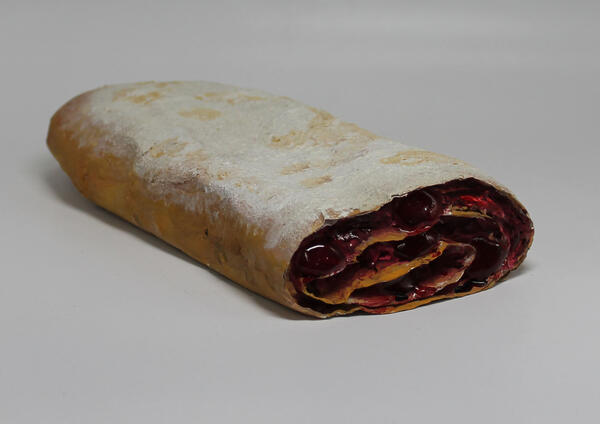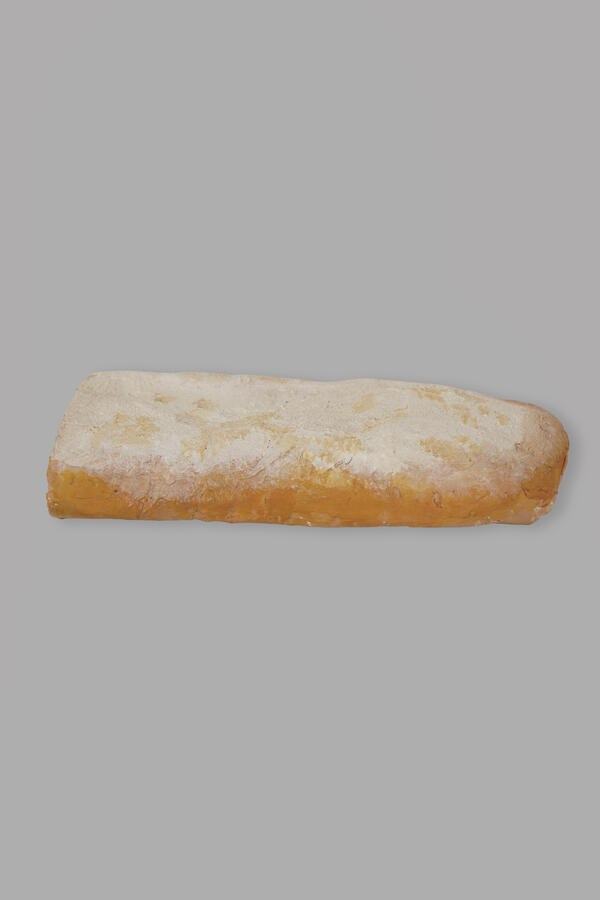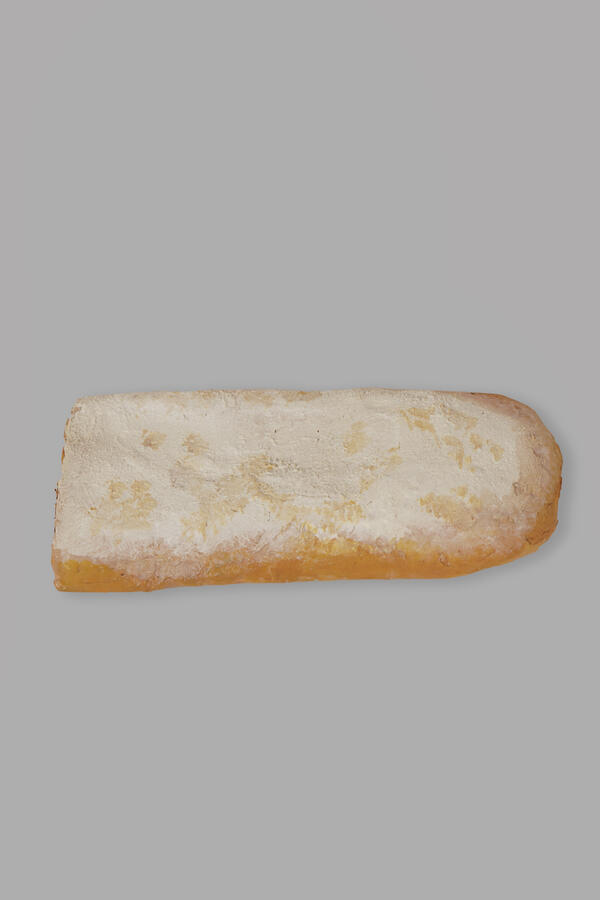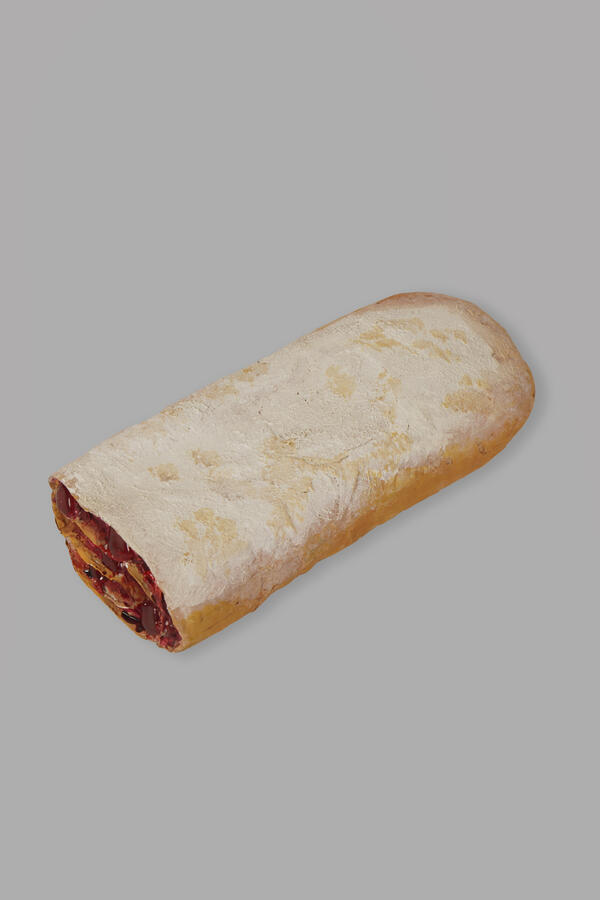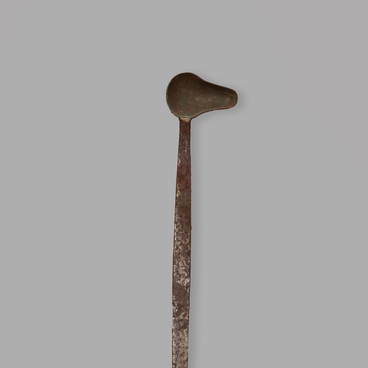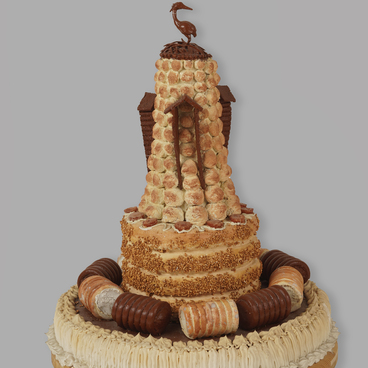Viennese coffee houses are known for their strudel. And although the dessert owes its popularity to Austrian confectioners, it was not invented in Vienna. Historians argue about the birthplace of this dessert: some name the Balkans, others say it was Ancient Greece, still others claim it was Byzantium… Most likely, baklava was the direct ancestor of this dessert, which was brought to Europe by Turkish conquerors in the 15th century.
Europeans were attracted by the recipe for this unusual, very thin dough. For baklava, layers of such dough were laid on top of each other, and honey and nuts were placed between layers of pastry. In Europe, multi-layered rolls with various fillings were invented based on this recipe. The strudel became especially popular in the era of the Habsburgs, who owned vast territories in Central and Eastern Europe. More than other countries, the strudel took root in Austria-Hungary, where it got its name. “Strudel”, that is, “a whirlwind” or “a whirlpool”, since the cake is twisted in the form of a roll or a whirlpool funnel.
The Congress of Vienna took place in 1814–1815. Diplomatic negotiations were interspersed with banquets, when “whirlwind” rolls with whipped cream were served. It is believed that it was after this that pastry became popular in many European countries.
The first strudels were made with a creamy filling. Over time, new additions appeared: nuts, raisins, chocolate, coffee, various fruits and berries. Even later, unsweetened versions of this dish appeared: with meat, potatoes, mushrooms, cabbage, fish, and even beets. Apple strudel (Apfelstrudel) with whipped cream or a scoop of vanilla ice cream is considered a classic.
Only the cool elastic dough that is used in the preparation of this dessert remains unchanged. Eggs, flour, sugar, salt, butter or olive oil and water are used. There are even recipes without eggs. After making the dough, it is left for 30–40 minutes, and then rolled out on a cloth napkin and stretched by hand until it becomes as thin as tissue paper. Then finely chopped filling is laid, everything is rolled up and put into the oven. Yeast-free dough bakes quickly and then does not get stale for a long time.
In Germany, it is believed that only a confectioner who is in love can prepare the right dough for the strudel — it has to be so thin that you have to be able to read love letters through it.
Europeans were attracted by the recipe for this unusual, very thin dough. For baklava, layers of such dough were laid on top of each other, and honey and nuts were placed between layers of pastry. In Europe, multi-layered rolls with various fillings were invented based on this recipe. The strudel became especially popular in the era of the Habsburgs, who owned vast territories in Central and Eastern Europe. More than other countries, the strudel took root in Austria-Hungary, where it got its name. “Strudel”, that is, “a whirlwind” or “a whirlpool”, since the cake is twisted in the form of a roll or a whirlpool funnel.
The Congress of Vienna took place in 1814–1815. Diplomatic negotiations were interspersed with banquets, when “whirlwind” rolls with whipped cream were served. It is believed that it was after this that pastry became popular in many European countries.
The first strudels were made with a creamy filling. Over time, new additions appeared: nuts, raisins, chocolate, coffee, various fruits and berries. Even later, unsweetened versions of this dish appeared: with meat, potatoes, mushrooms, cabbage, fish, and even beets. Apple strudel (Apfelstrudel) with whipped cream or a scoop of vanilla ice cream is considered a classic.
Only the cool elastic dough that is used in the preparation of this dessert remains unchanged. Eggs, flour, sugar, salt, butter or olive oil and water are used. There are even recipes without eggs. After making the dough, it is left for 30–40 minutes, and then rolled out on a cloth napkin and stretched by hand until it becomes as thin as tissue paper. Then finely chopped filling is laid, everything is rolled up and put into the oven. Yeast-free dough bakes quickly and then does not get stale for a long time.
In Germany, it is believed that only a confectioner who is in love can prepare the right dough for the strudel — it has to be so thin that you have to be able to read love letters through it.

